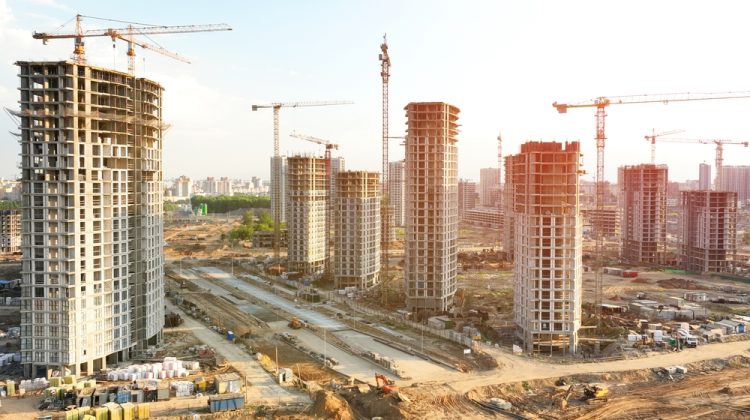
Embodied Carbon in Buildings: Reducing Hidden Emissions for a Sustainable Future
Embodied Carbon in Buildings: The Hidden Challenge in Construction
As the construction industry moves toward sustainability, one crucial factor gaining attention is embodied carbon in buildings. While operational emissions—those from heating, cooling, and lighting—are often discussed, embodied carbon represents the “hidden” emissions embedded in the materials and processes used to construct buildings.
Addressing embodied carbon in buildings is essential to achieving net-zero goals and reducing the environmental footprint of construction projects worldwide.
What Is Embodied Carbon in Buildings?
Embodied carbon refers to the total greenhouse gas emissions generated during the extraction, manufacturing, transportation, construction, and disposal of building materials. Unlike operational carbon, which occurs during a building’s use phase, embodied carbon is emitted before a building is even occupied.
In simple terms, embodied carbon in buildings measures the carbon footprint of materials like cement, steel, glass, and aluminum—all of which require significant energy to produce.
Why Embodied Carbon Matters
Globally, embodied carbon accounts for nearly 11% of total CO₂ emissions and up to 30% of construction-related emissions. As buildings become more energy-efficient, the share of embodied carbon continues to rise.
Reducing embodied carbon in buildings is therefore a key strategy in meeting climate targets. In India, where urbanization and infrastructure projects are rapidly expanding, addressing embodied emissions is critical for achieving the nation’s net-zero by 2070 goal.
Sources of Embodied Carbon in Construction
1. Building Materials
Cement and steel are the biggest contributors to embodied carbon in buildings. Producing one ton of cement releases nearly one ton of CO₂ due to energy-intensive manufacturing and chemical reactions.
2. Transportation
Emissions from transporting materials from factories to construction sites add significantly to a project’s total embodied carbon footprint.
3. Construction Activities
Energy use from heavy machinery, site operations, and waste management during construction contributes to embodied carbon as well.
4. Demolition and Disposal
Even at the end of a building’s life, demolition and waste disposal generate emissions, adding to the total embodied carbon in buildings.
Strategies to Reduce Embodied Carbon in Buildings
1. Use Low-Carbon Materials
Opt for materials with lower emission footprints such as fly ash concrete, bamboo, recycled steel, and engineered timber. These alternatives can cut embodied carbon in buildings by up to 50%.
2. Reuse and Recycle
Reusing existing building components and recycling construction waste reduces the demand for new materials, directly minimizing embodied carbon emissions.
3. Optimize Design and Material Efficiency
Smart architectural design can reduce the amount of material required without compromising strength or safety. This optimization is one of the simplest ways to lower embodied carbon .
4. Adopt Prefabrication and Modular Construction
Prefabricated components are produced in controlled environments with minimal waste, making them ideal for embodied carbon reduction.
5. Life Cycle Assessment (LCA)
Conducting an LCA helps measure the environmental impact of materials across all stages of a building’s life. This scientific approach ensures informed decisions for embodied carbon .

India’s Progress in Reducing Embodied Carbon
India is increasingly promoting sustainable construction through policies like the Energy Conservation Building Code (ECBC) and the National Building Code. Organizations such as the Indian Green Building Council (IGBC) are encouraging builders to adopt low-carbon practices and green certifications such as LEED and GRIHA, which emphasize the importance of embodied carbon reduction.
The government’s focus on “green infrastructure” and circular economy principles further supports the movement toward low-embodied carbon.
Benefits of Reducing Embodied Carbon in Buildings
-
Climate Impact Reduction: Lowers total CO₂ emissions from the construction sector.
-
Resource Efficiency: Encourages recycling and reuse of materials.
-
Lower Long-Term Costs: Sustainable materials reduce energy and maintenance expenses.
-
Compliance & Certification: Helps achieve IGBC, LEED, or GRIHA certification.
-
Enhanced Sustainability Reputation: Demonstrates commitment to climate action and green construction.
Collaborate for a Greener Tomorrow
Reducing embodied carbon requires collaboration between architects, engineers, material suppliers, and policymakers. By rethinking material choices and construction methods, the industry can take significant steps toward climate resilience.
For expert guidance on sustainable construction and carbon reduction strategies, connect with AMS India. Our team specializes in eco-friendly design, low-carbon materials, and sustainable infrastructure solutions.
Conclusion: Building the Future Responsibly
Tackling embodied carbon is essential to achieving global net-zero ambitions. While it’s invisible to the eye, its impact on the planet is profound. Through innovation, responsible sourcing, and green technology, the construction industry can reduce hidden emissions and build for a sustainable future.
Every choice—from material selection to design—matters in shaping a world where buildings contribute to climate solutions, not problems.
Read more related articles to enhance your knowledge and make informed decisions
Cost-Effective Modular Construction: Fast, and Sustainable Building Solutions
Smart Modular Buildings: Innovative, Efficient, and Sustainable Construction








